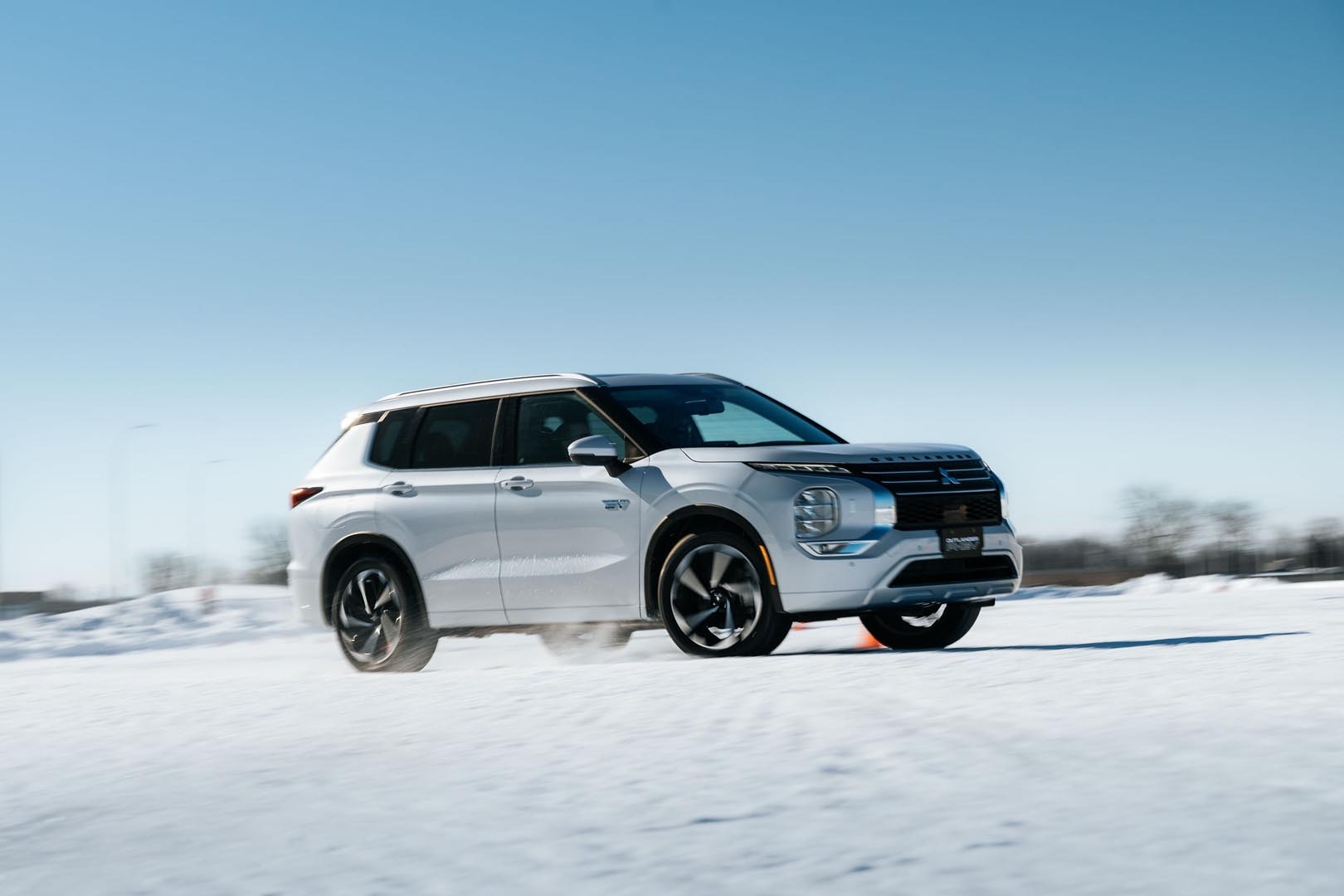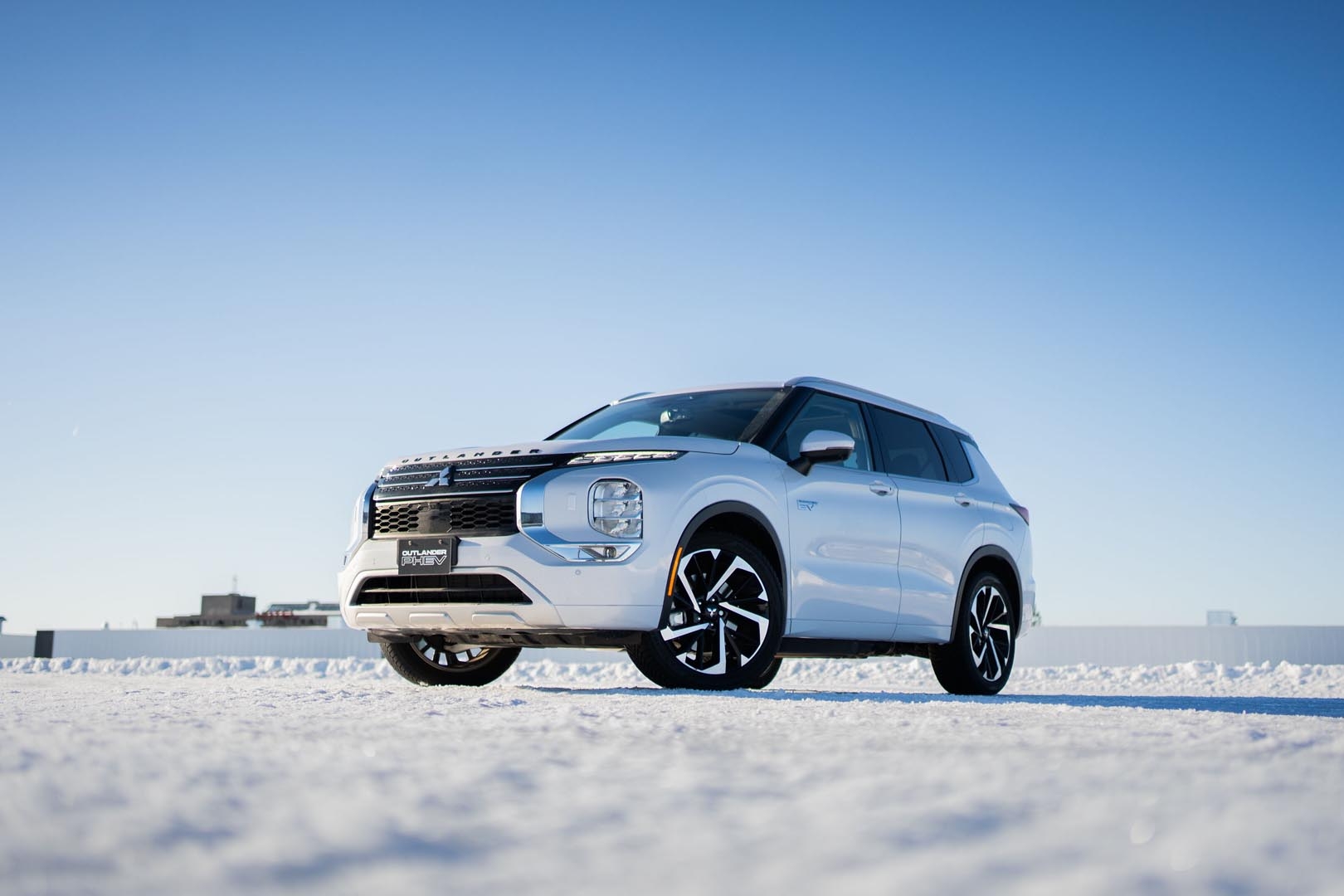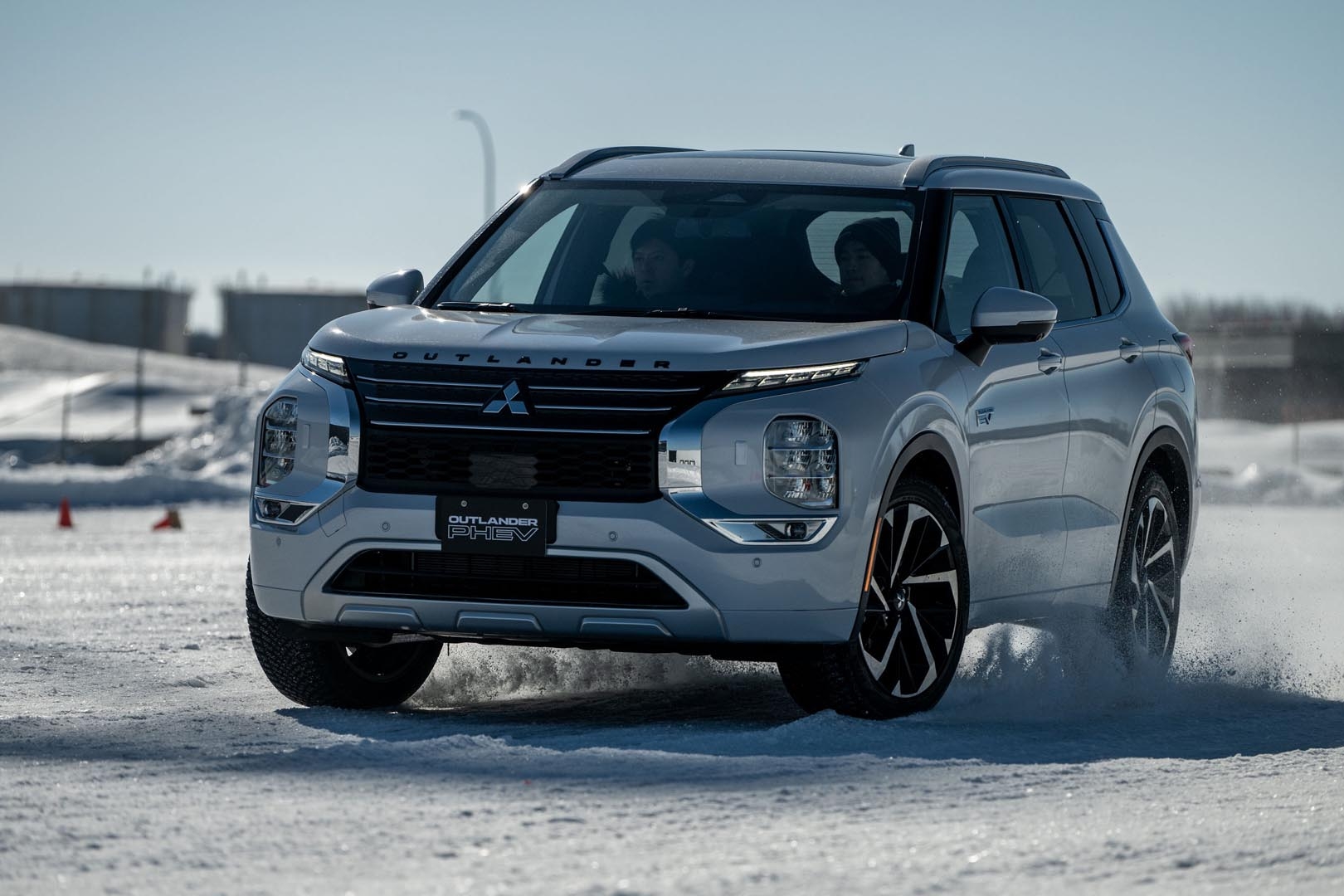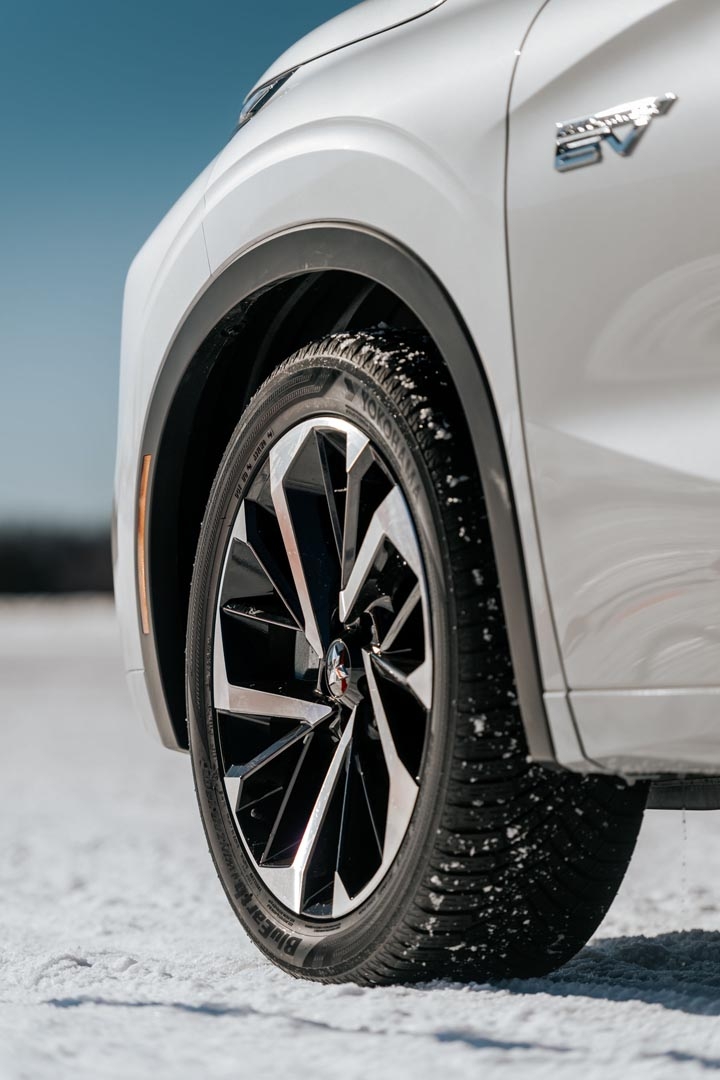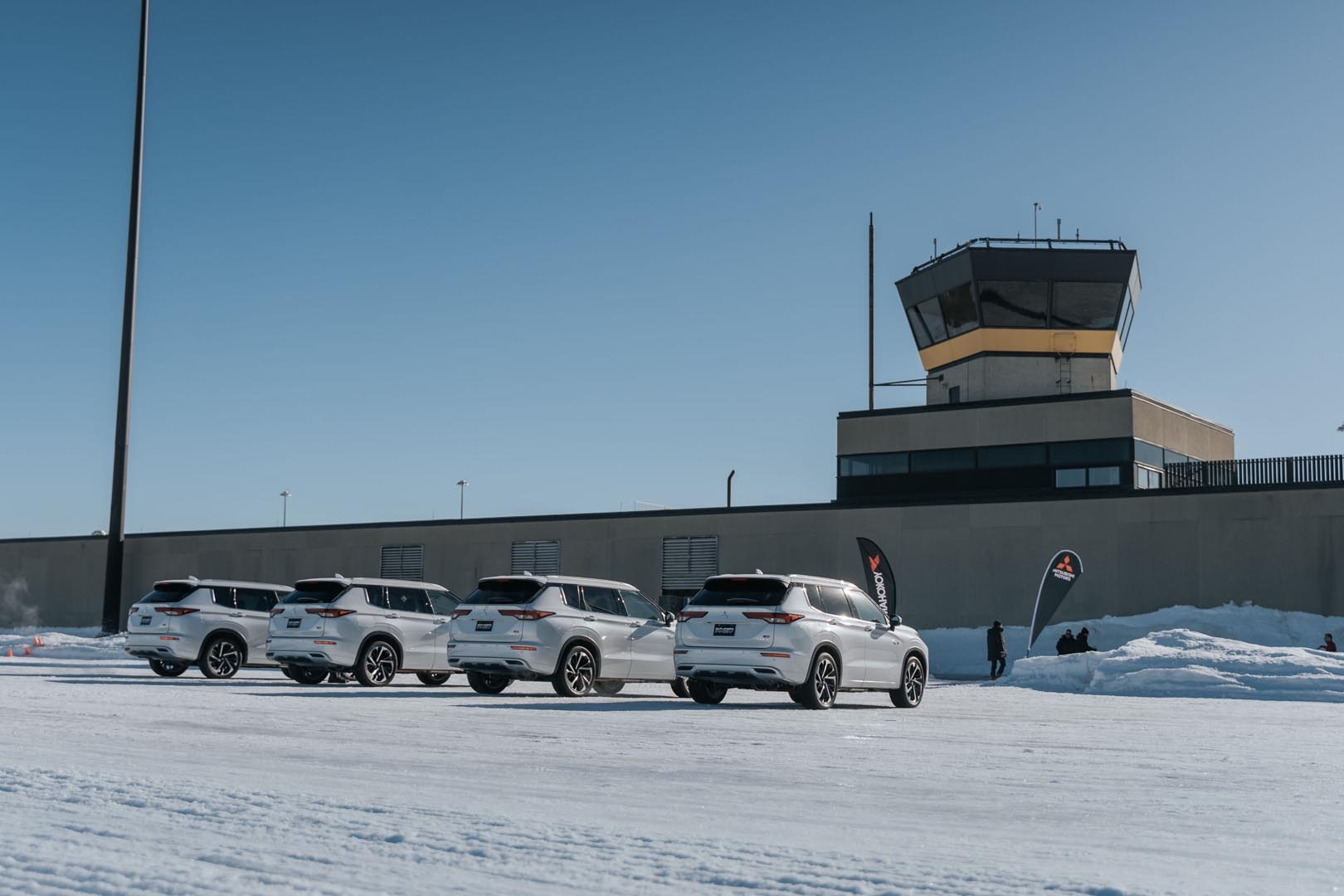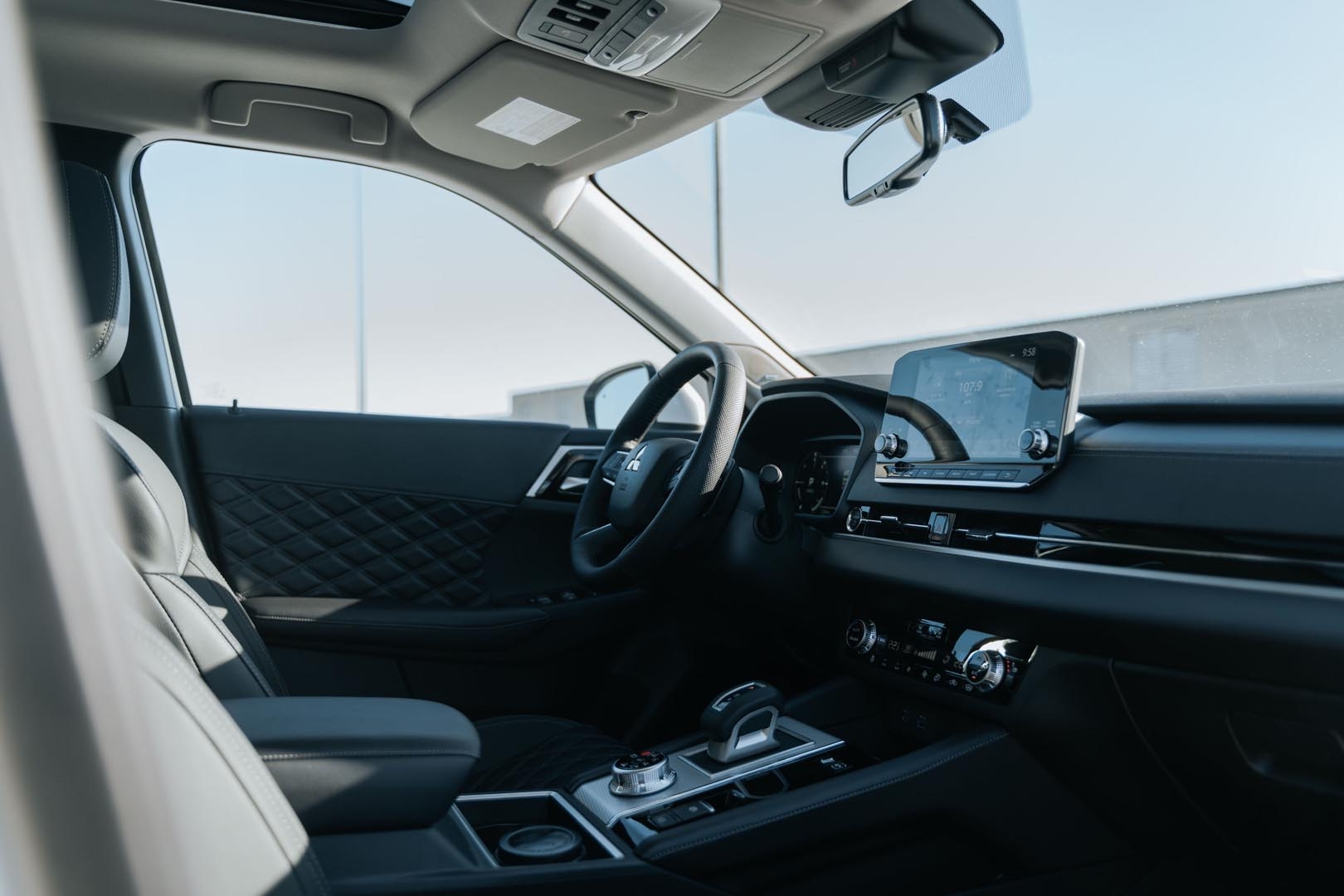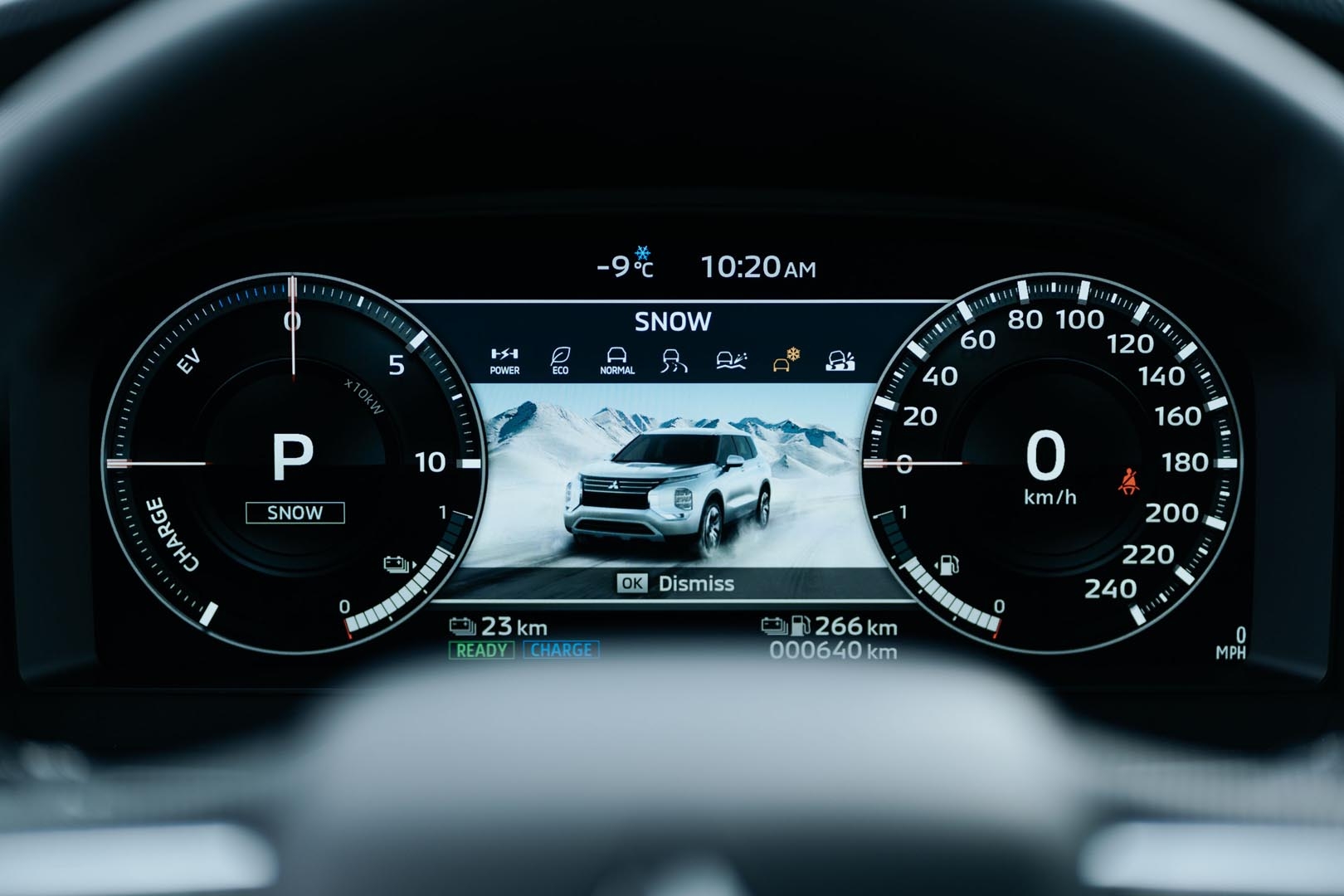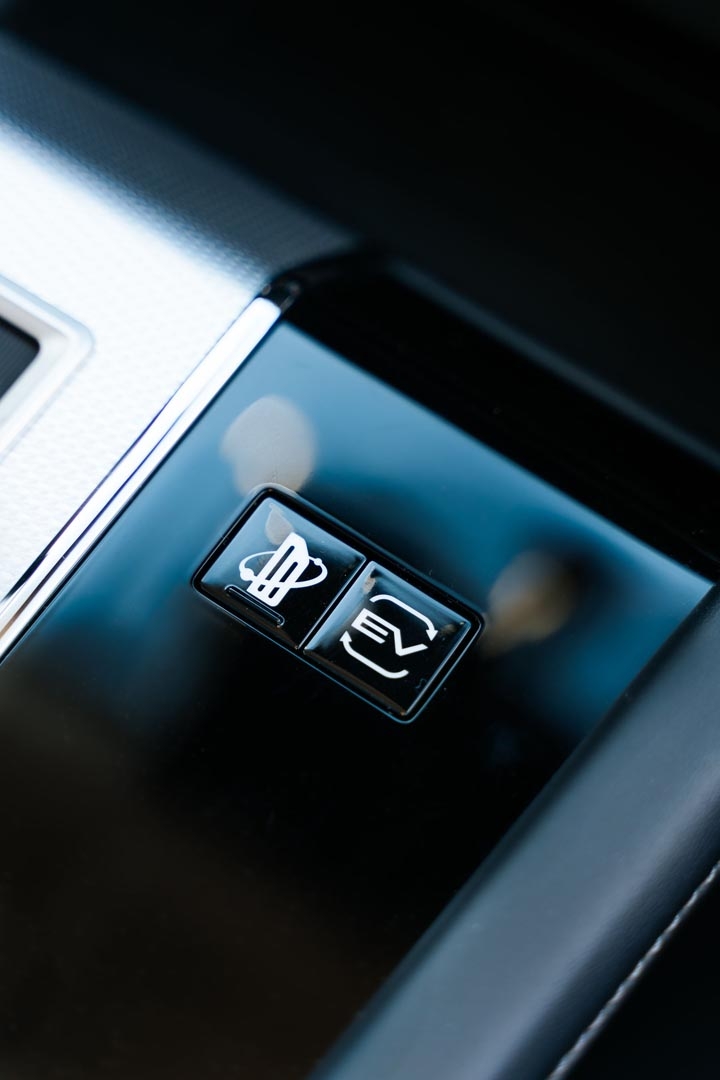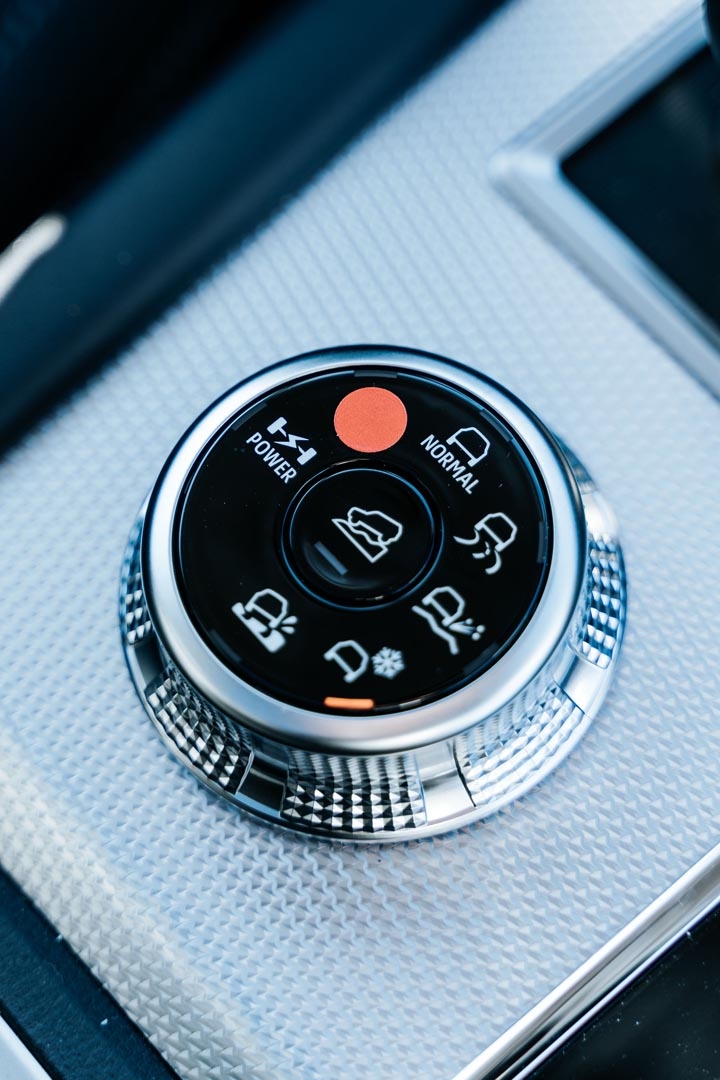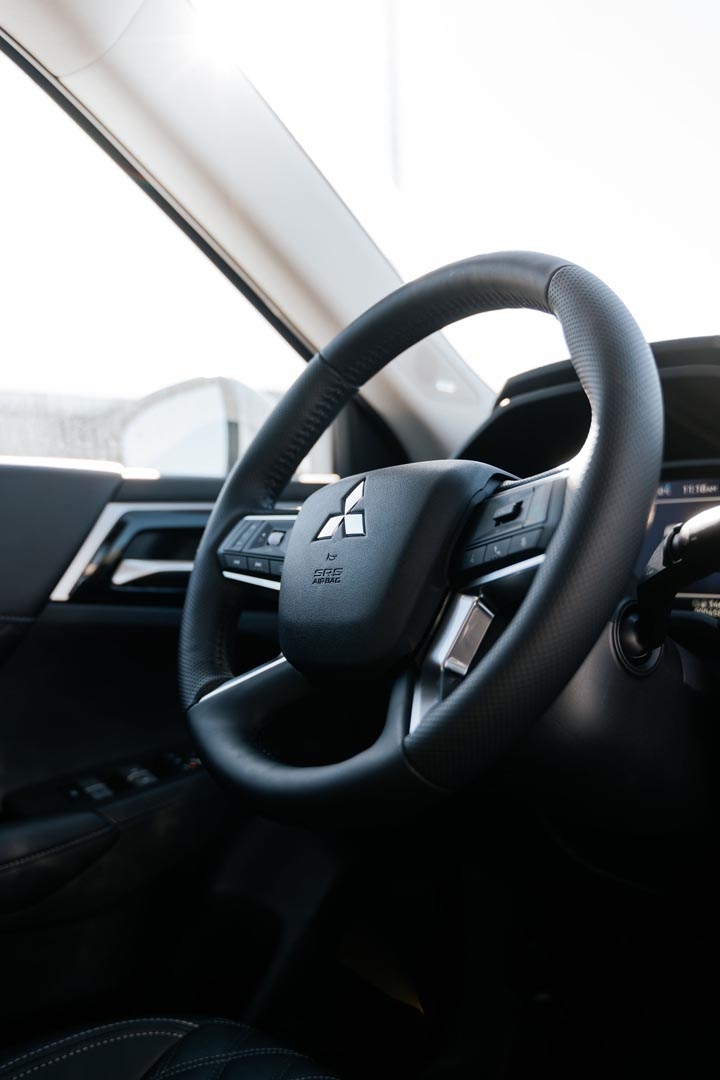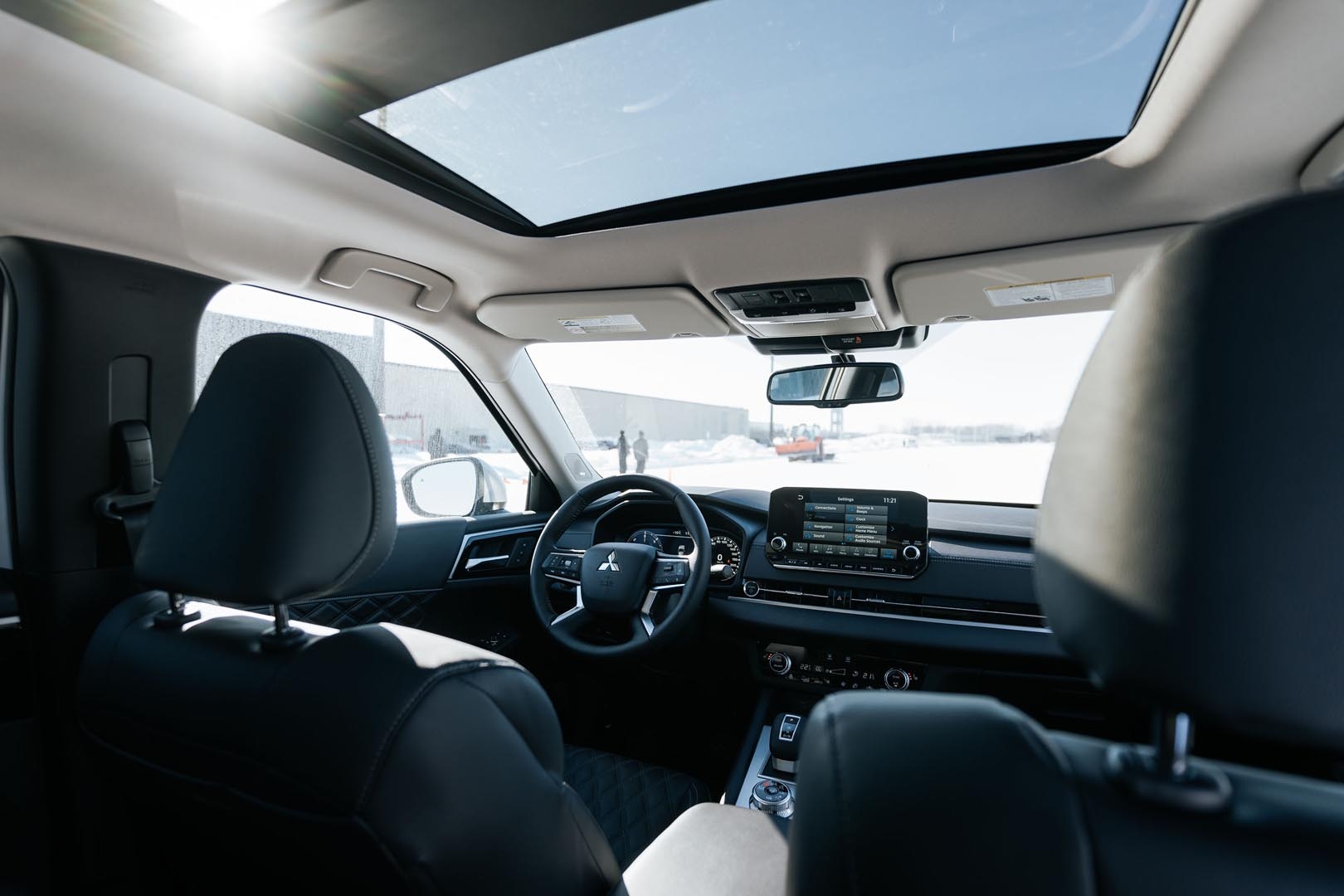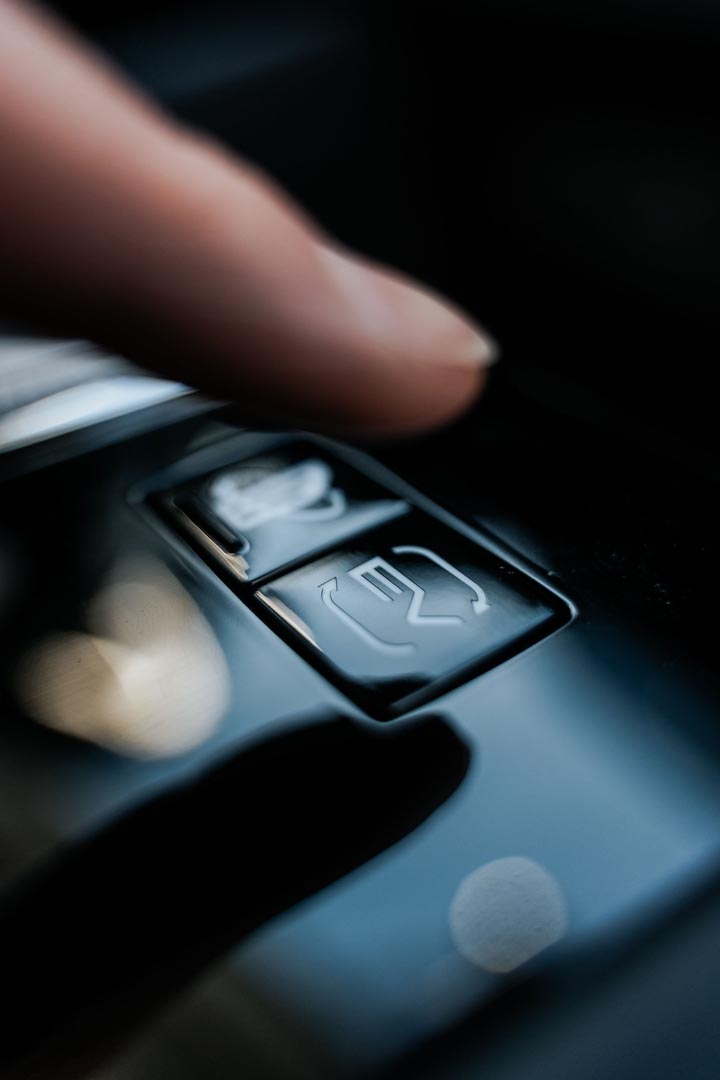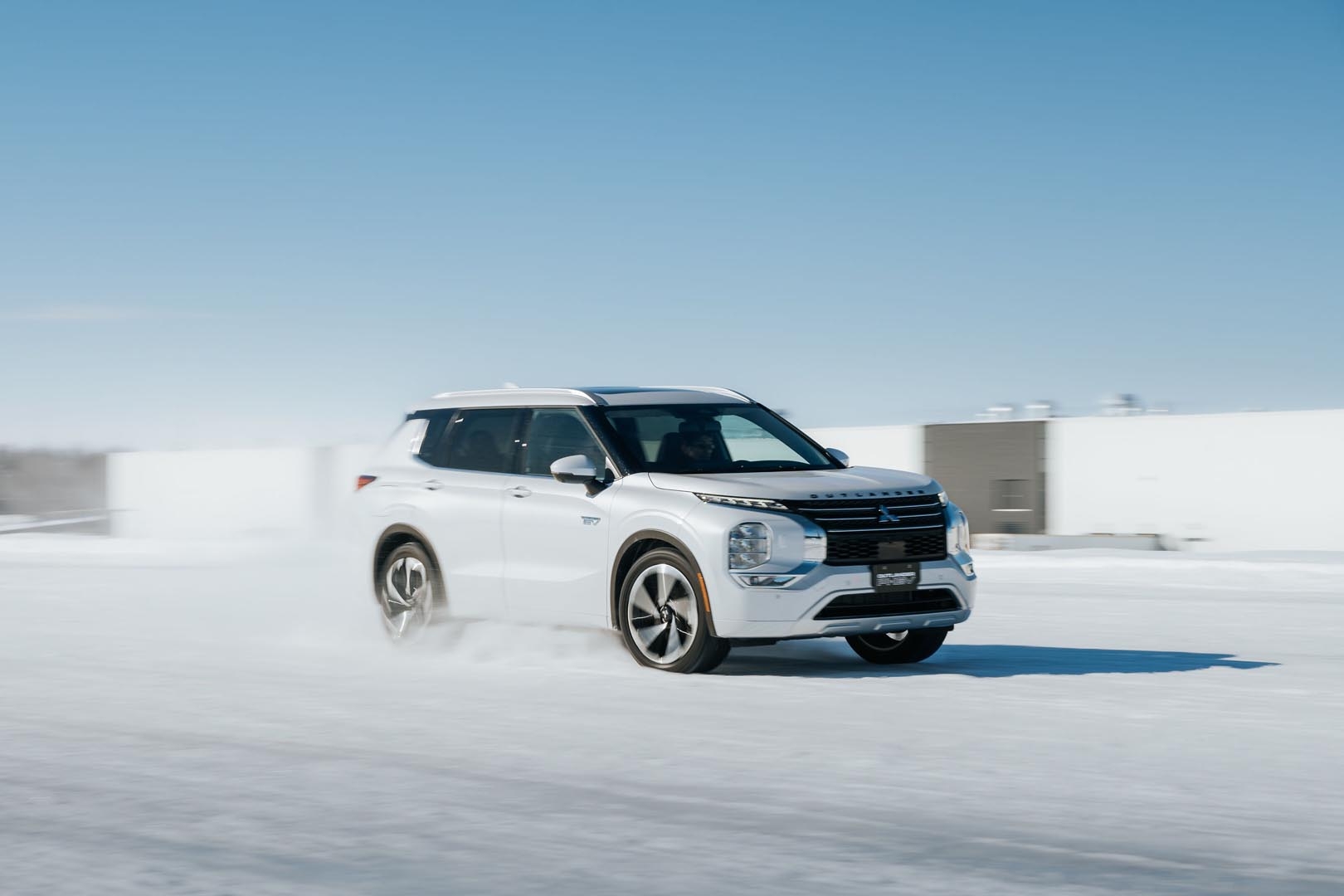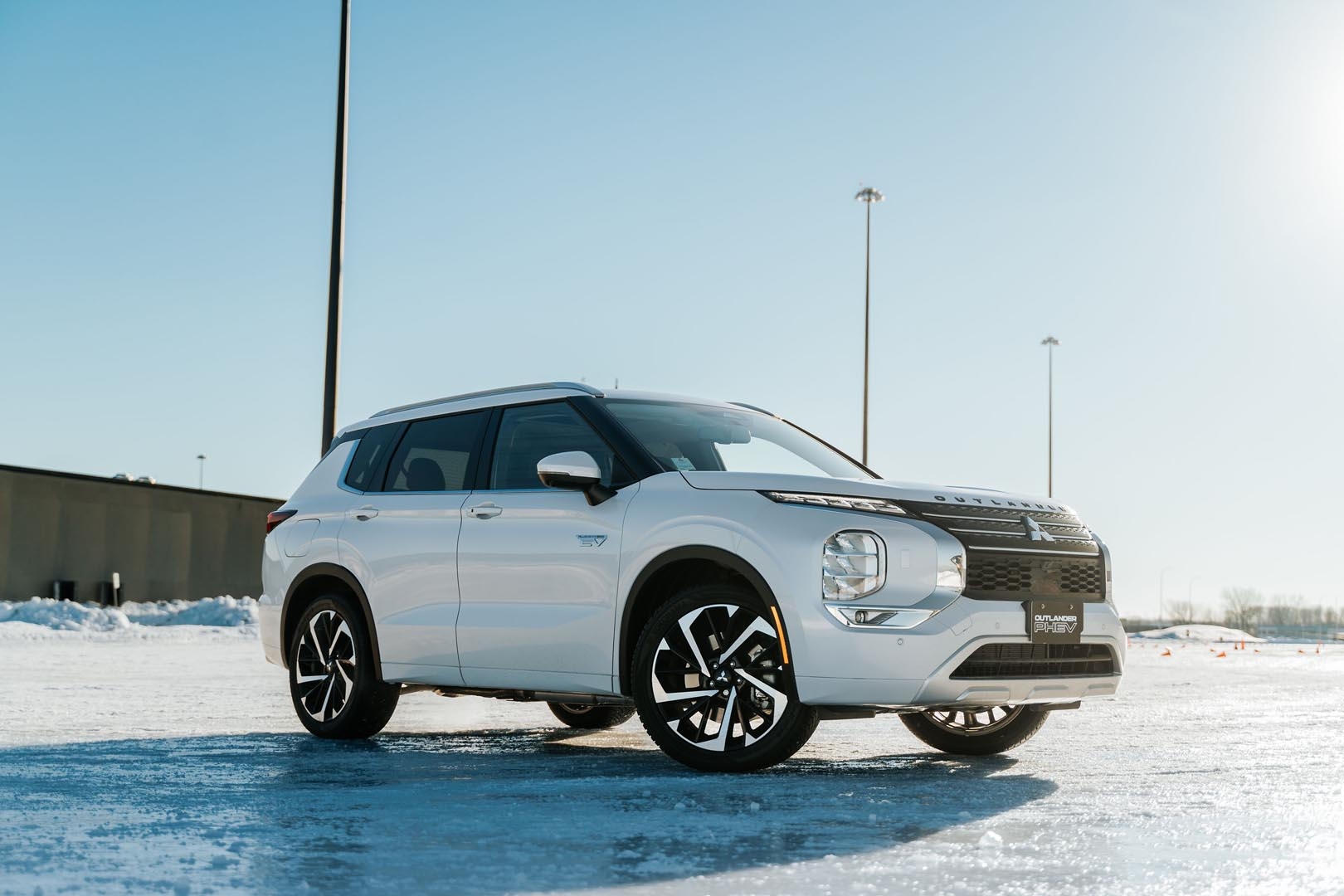
MITSUBISHI Outlander PHEV 2024
Pros and cons
Pros
- Enhanced electric range
- Safe, efficient all-wheel drive
- Commendable performance
- Spacious, comfortable interior
- Polished finish
- Attractive price thanks to current government incentives
Cons
- Electric motors overwhelmed at cruising speed in cold weather
- Overassisted steering
- Disappointing consumption in hybrid mode
- Ride sometimes stiff (20-inch wheels)
- Third-row layout almost useless
Overview
Mitsubishi launched the second-generation Outlander PHEV in 2023, just one year after the gas-powered version of this same SUV. The plug-in hybrid boasts significantly higher values than its predecessor, both in terms of range and power. It still features a 100% Mitsubishi-designed powertrain, while the gas-only models use an engine long used by Nissan in the Rogue. Since 2022, the latter has shared its platform, its mechanics, as well as several interior elements with the Mitsubishi SUV.
Much like the Toyota RAV4 Prime, which is also plug-in, the Outlander PHEV features an all-wheel-drive system with no mechanical link between both axles. As such, an electric motor located on the rear axle powers the rear wheels in various scenarios, including when traction is lost at the front. The Outlander’s new version has improved its range considerably: the 61km indicated by Natural Resources Canada is now closer to the RAV4’s 68km.
In this context, Mitsubishi invited the North American automotive press to a winter driving event at the ICAR Mirabel circuit last February. We were given the opportunity to test the vehicle on snowy and icy roads, using some of the seven driving modes integrated into the four-wheel-drive system. The test vehicles, all of them GT-Premium models, were fitted with a new set of Yokohama all-season tires approved for winter driving.
How did the Outlander PHEV fare, and what have we learned from this experience in terms of road safety?
Verdict
The Outlander PHEV’s test drive on slippery roads highlighted three key points. Firstly, Mitsubishi’s S-AWC all-wheel-drive system fully deserves its solid reputation. Secondly, all-season tires approved for winter use stand up honourably in deep snow, but their limitations on ice remain quite obvious. Finally, every motorist in Quebec would gain from occasional practice in a controlled winter environment, if only to boost their confidence and better understand the reactions of today’s vehicles, most of which are laden with driving aid tools.
Evaluation
Body, cabin and cargo space
Since it shares the same platform as the Nissan Rogue, the Outlander is one of the largest compact SUVs on the market. The PHEV treatment in no way compromises available space: in fact, it actually increases interior capacity, both for its occupants and for their cargo.
Easy to access, the cabin has plenty of room for four adults, although the sunroof does restrict headroom. A fifth person—or a third child in a booster seat—can even fit quite easily in the middle seat. However, the presence of a third row hardly makes any difference, whether it’s because of the Spartan comfort of the slim seat or the lack of clearance found back there.
GT-Premium versions are characterized by the best finish ever achieved in a Mitsubishi product. The affiliation with Nissan is made manifest by logical controls, numerous physical buttons alongside clear, well-arranged display screens. A sense of cohesiveness has replaced the patchwork of mismatched elements that once defined the Outlander’s dashboard.
Comfortable seats and a comprehensive range of equipment between the five variants in the catalogue reinforce the sense of value for money. The one significant omission is the absence of a heated steering wheel in the base ES version, since this feature reduces the need for traditional heating, which remains a major foe of electric range in cold weather.
Eligibility for maximum incentives of $10,000 for a plug-in hybrid narrows the gap compared with a gas-powered Outlander to around between $3000 and $5000. However, $3000 will be deducted from the provincial rebate in 2025, and even more the following year.
Safety
Safety features
- Antilock brakes with electronic brake-force distribution and brake assist
- Brake override system
- Stability and traction control
- Hill-start assist
- Hill descent control
- Front airbags
- Front knee airbags
- Front and rear side airbags
- Airbag between the two front seats
- Side curtain airbags
- Front seat belts with pretensioners
- Seven headrests (those in the front and rear side seats are adjustable, while others are retractable)
- Rear-seat reminder
- Tire pressure monitor
- Backup camera
- Rear parking sensors
- Forward collision warning
- Front automatic emergency braking with pedestrian detection
- Rear automatic emergency braking
- Blind-spot monitoring (with automatic steering assist in GT and GT-Premium versions)
- Rear cross-traffic alert
- Lane departure warning with automatic steering assist
- Fatigue detector
- Automatic high beam
- Adaptive cruise control
- Surround-view cameras (standard on LE, SEL, GT and GT-Premium, not available on ES)
- Lane-keeping assist (standard on GT and GT-Premium, not available on other versions)
Crash test results
National Highway Traffic Safety Administration
Overall score: Not tested
Frontal impact: Not tested
Side impact: Not tested
Rollover resistance: Not tested
Insurance Institute For Highway Safety
Moderate overlap frontal impact: 4 / 4
Small overlap frontal impact: 4 / 4
Side impact: 4 / 4
Rear impact: Not tested
Roof strength: Not tested
IIHS Top Safety Pick
Visibility
Visibility to both sides and front is adequate, thanks in part to the fairly horizontal window sill. The wide B-pillar slightly hinders lane change manoeuvres on the driver’s side, but the electronic blind-spot monitoring compensates for this. Mitsubishi has also cleverly included surround-view cameras with the LE version, the second in the catalogue. As regards side mirrors, they’re a good size.
Headlights: LED reflector headlights have been awarded top ratings by the Insurance Institute for Highway Safety. They are among the few that provide good or very good visibility in all the tests conducted by the organization, both in low beam and high beam modes. A rare feature, headlamp washers are standard across the range.
Mechanical overview
Mitsubishi has taken advantage of the Outlander’s latest redesign to significantly enhance several of the plug-in hybrid’s capabilities. The first of these is the lithium-ion battery, which can now store 20kWh of energy rather than the 12kWh capacity of the previous version.
Hence, the significant increase in electric range, which has leaped from a mere 39km to 61km certified by Natural Resources Canada (NRCan). This puts the Outlander PHEV at the top of its segment, between the Toyota RAV4 Prime and the plug-in hybrid Ford Escape.
Overall range has also been greatly enhanced, rising from 509 to 687km. The new platform has made it possible to install a 56-litre fuel tank rather than the scant 40 litres of the former generation. And this, despite an almost doubled battery capacity!
Mitsubishi seized the opportunity to install a new, improved electric motor on each axle. Instead of being capped at 80 horsepower per axle, they now deliver 114 horsepower at the front and 134 at the rear. Their combined torque has also experienced an upward curve, from 245 to 332 pound-feet.
The 2.4-litre gasoline engine now outputs 131 horsepower, rather than the 117 of the previous 2.0-litre engine. It acts mainly as a generator when the battery is depleted or when strongly accelerating. Nevertheless, it can power the front wheels directly when speeds exceed 135km/h—a threshold formerly set at 120km/h.
With a larger battery comes a longer charging time. A 240-volt, 15-amp station fully charges the battery in about 6.5 hours, which is 3 hours more than the previous model. You can easily cut off half of the 6.5 hours by using a 30-amp charging station, the most widely used both at home and in public networks.
Replenishing the battery using a standard 120-volt, 12-amp socket now requires 16 hours. In other words, to leave with a tankful of electrons at 7 in the morning, you’d have to plug the vehicle in at 3p.m. the day before. At this pace, the installation of a home charging station makes perfect sense, especially as it provides the most consistent charging for all cells in the battery.
The Outlander PHEV remains one of the only rechargeable models fitted with a plug for a fast charging station. Given the rising price of this charging technology, which requires almost 40 minutes to replenish the battery from 0 to 80%, we question its usefulness. All the more so as the CHAdeMO connector that Mitsubishi insists on offering is gradually disappearing from public networks.
The small automaker’s plug-in SUV hovers at 2090kg, i.e. 400kg more than a conventional gas-powered model, and at least 140kg more than a RAV4 Prime. Perhaps this explains, or at least partly explains, the Outlander’s significantly higher consumption ratings: according to NRCan, it guzzles 9L/100km in a city-highway combination when the battery is discharged, while the Toyota manages just 6L/100km!
Driving impressions
When we drove the Outlander PHEV this year, temperatures oscillated between -5°C and 0°C. The route that took us from Laval to Mirabel included several secondary roads and urban stretches. In these environments with 80km/h speed limits, the twin electric motors performed their task honourably, with the remaining range decreasing at roughly the same rate as the kilometres covered along the way.
On the highway, the gasoline engine promptly kicked in to support both normal cruising speed and interior heating. We experienced a similar situation during another test back in March 2023. Basically, to remain in electric mode during an intercity trip, one must either take the back roads or do without heat!
The Outlander PHEV proved rather uneventful on dry roads. It’s stable, yet its handling is rather bland, owing in particular to the steering, which is far too light. Moreover, the large 20-inch tires can sometimes impose a certain stiffness in spite of the suspension’s suppleness.
Once at the track, however, the vehicle began to shine. We were then able to sample its behaviour according to the driving mode selected, both in slalom and in circular manoeuvres.
With a bit of a surprise , we recognized that the Outlander’s Snow mode wasn’t just a marketing ploy. Slower throttle, reduced power, faster rear-engine response, earlier stability control intervention: all this computerized wizardry greatly facilitated the negotiation of curves, protecting the driver from sharp understeer or oversteer.
Although the Normal mode was still capable of keeping us out of trouble, we definitely had to step up our efforts to maintain our trajectory. The exercise was more entertaining, but certainly less reassuring than in the more cautious Snow mode.
As the day progressed, ice replaced snow on the test tracks. These conditions intensified skidding, especially as the vehicles were fitted with winter-approved all-weather tires rather than genuine premium winter tires. The latter have a softer rubber compound and a greater number of micro sipes, both of which are engineered to improve grip and suction. If you often drive on icy roads, or near waterways, don’t overlook the importance of fitting your tires accordingly.
A small contingent of Mitsubishi engineers had travelled from Japan to “tamper” with the electronic management of a test model on site. Their aim was to mimic the behaviour of a competitor’s SUV equipped with reactive all-wheel drive, which transmits power to the rear only when it detects a loss of grip.
This altered Outlander did indeed find it much harder than its counterparts to stay on track. However, there were no competing vehicles on site to compare it with, so we took this exercise with a pinch of salt.
These few hours of winter dancing, combined with our experience test driving several compact SUVs on slippery roads, still made it possible for us to confirm our favourable assessment of Mitsubishi’s S-AWC system. While not quite as “intuitive” and transparent as a permanent all-wheel drive like those from Audi or Subaru, we still rate it as one of the best-performing AWD systems, along with those from Acura, Ford, and Mazda.
Other highlights
Braking: unnatural feel and pedal difficult to modulate at first, during the regenerative braking phase. Paddles behind the steering wheel enable deceleration to be managed through six levels of intensity, while a separate button next to the gearshift lever provides access to a one-pedal driving mode. Oddly, none of these settings is able to bring the vehicle to a complete stop without touching the pedal. Powerful mechanical brakes.
Driving assistance: adaptive cruise control reacts too hastily to approaching vehicles, even when the distance is set to the shortest possible value. Automatic modulation of speed according to route and road signs quickly becomes tiresome, as it hinders the ability to naturally follow the flow of traffic. Fortunately, this feature can be deactivated, or even reverted to a conventional cruise control if desired. All other devices work quite seamlessly.
